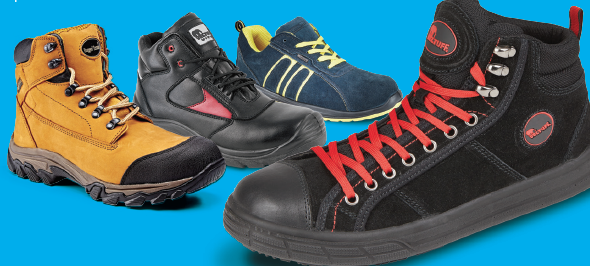
In the workplace, employers must be aware of their options if employee health and safety is to be compromised during their daily duties. When it comes to protective footwear in particular, it’s important for employees to know just where they stand.
Though not always possible for footwear to completely eliminate hazard risk, minimisation is possible. Such risks can be minor, where working conditions are temperature-sensitive. Risks can escalate however, with possibility of falling loads. Without the correct footwear, job-induced foot pain leaves susceptibility to blisters and sprains, or occasionally more severe injury.
Job risk therefore determines footwear selection, with the first criterion to consider being suitability of flooring.
When choice of material permits, wood, rubber and carpet make for a more viable option in comparison to concrete. The Workplace (Health, Safety and Welfare) Regulations has long indicated that flooring must be maintained and free from obstruction, allowing for safe movement.
A preferable working environment prioritises flat surfacing where possible, and in cases of frequent contamination, an employee’s ability to walk without risk of slipping is imperative.
When tasked with buying footwear for employees, there are multiple measures in which employers are able to buy against:
When purchasing anti-slip footwear, the Health and Safety Executive alerts buyers to be vigilant of supplier testing. Where footwear has been tested, look out for coefficient of friction (CoF) marks. The higher the CoF, the greater the slip resistance.
Footwear which has successfully passed the EN test for slip resistance is then given one of three codes.
SRA – Resistant on Ceramic + Sodium Lauryl Sulphate
SRB – Resistant on Steel + Glycerol
SRC – Resistant under both SRA and SRB Conditions
SRC is currently the highest rating for slip resistance under the more recent EN ISO 20345:2011, giving those purchasing footwear, a standard to look out for.
Ultimately, it is in the employer’s interest to source footwear that will best suit the working environment. Not only can potential accident cost, by choosing the right choice of footwear, workers can not only improve their productivity, but they can put their best foot forward.